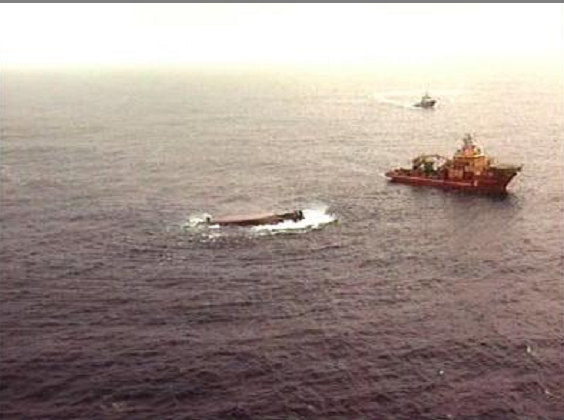
A marine disaster which caused the greatest loss of life in the North Sea since Piper Alpha has been remembered ten years after the Bourbon Dolphin capsised with the loss of eight lives.
The anchor handling vessel “turned turtle” when an operation off the coast of Shetland to shift the anchor of a drilling rig went wrong in April 2007.
Eight of the 15 Norwegian people on board died, including the Master and his 14-year old son, who was on board for work experience during the Easter holidays.
Pinsent Masons partner Bruce Craig, spent three days on board the rig, as part of the post-incident investigation team.
“At the time of the capsize, the Bourbon Dolphin was still physically attached to the rig by the length of the anchor chain and there was a risk that if the weather turned it might strike the rig. This meant that non-essential personnel had to be taken off the rig and were evacuated to Sumburgh Airport. I went to Sumburgh first thing the following morning and took initial statements – including from a crew member who had been on deck and had seen the capsize happen.
“With the loss of eight lives and seven survivors having had a very narrow escape, this was a huge incident and, outwith aviation disasters, this remains the greatest loss of life in the UKCS since Piper Alpha.
“It was particularly distressing that apart from the fact that the 14-year-old-boy died and his body was never recovered, his father’s normal vessel within the Bourbon fleet worked off West Africa and he had swapped a single 28 day tour of duty with one of his colleagues to enable him to work in the UKCS at that time so his son could be aboard.”
An inquiry into the tragedy found safety failings by three firms – owner Bourbon Offshore, operator Chevron and rig owner Transocean – were factors in the accident.
Bourbon Offshore was fined £500,000 in Norway because the company failed to give the ship’s new captain, Mr Remoy, enough time to learn about the vessel, her crew and the complex operation. He had only 90 minutes to take over.
Mr Craig said: “A huge amount of background work was done investigating the incident including significant work by naval architects who discovered that although this design of vessel could be used safely as an offshore supply vessel, there was a stability issue if the vessel was used in anchor handling – considering the inevitable significant weight involved in having hold of one end of the anchor chain.
“The Bourbon Dolphin tragedy had a profound effect on anchor handling, not only in the UK sector, but worldwide. The vessel was only seven months old and had been approved by the Norwegian Maritime Directorate. Following the tragedy, stability calculations were re-done for anchor handlers worldwide, with greater emphasis placed on the risks involved in anchor handling – including the weights involved, the weather, sea state, and also the risk of underwater currents.”
Mr Craig added: “With the UKCS quite correctly priding itself as providing the gold standard in offshore safety worldwide, it is impossible to over-emphasise how significant the Bourbon Dolphin tragedy was in improving even further the safety standards of anchor handling vessels.
“From a personal perspective, this was an extremely difficult case to work on. I was very much affected by what had happened – the boy who was lost was not much older than my own children – and from a professional perspective it remains by far the most difficult and time-consuming case I have been involved in since I started work in 1988.”
